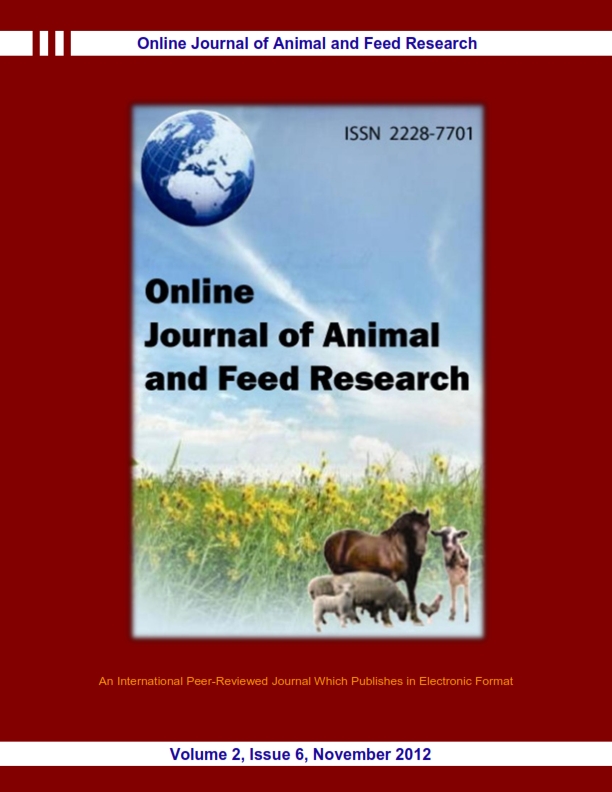|
Research Title/ Field
|
Article (Abstract)
|
Download
|
|
The effect of ginger root powder (Zingiber officinale) supplementation on broiler chicks performance, blood and serum constituents
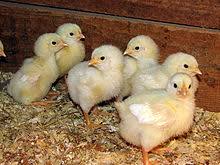
|
Original Research, B84
Zomrawi W.B., Abdel Atti Kh.A. and Dousa B.M.
Online J. Anim. Feed Res., 2(6): 457-460, 2012.
ABSTRACT: A study using one hundred and twenty eight unsexed day old broiler chicks (Ross 308) 32 birds/treatment with four replicates was conducted to evaluate the effect of ginger root powder as natural feed additives on growth performance, blood and serum constituents of broiler chickens. Four dietary treatments were formulated to meet the nutrient requirements of broiler chick containing ginger root powder at levels 0%, 0.5%, 1% and 1.5%. Result showed that significant decreased (P<0.05) were observed in feed intake and weight gain for birds fed 0.5% ginger root powder. There were no significant differences (P>0.05) in feed conversion ratio among all dietary treatments. Treatments had significant decreased (P<0.05) in pre-slaughter weight for birds fed 0.5% ginger root powder. No significant differences (P>0.05) were observed in dressing percentage. There were no significant effect (P>0.05) on serum glucose, total protein and creatinine. Significant differences were observed in serum triglyceride and cholesterol levels. There were no significant differences (P>0.05) among all dietary treatments in Hb percentage, PCV percentage, TRBcs, MCV, MCH and MCHC percentage. The results showed that the inclusion of ginger root powder at levels 0.5% and1% in the diet , had lowering effect on cholesterol levels, and the chick may tolerate up to 1.5% without adverse effect on growth performance and blood parameters.
Key words: Ginger root powder, Broiler, Serum cholesterol
|
 . .
.

|
|
Effect of different salt concentrations on chemical composition of the fish Hydrocynus spp.

|
Original Research, B85
Abbas Bakhiet H.H. and Khogalie F.A.E.
Online J. Anim. Feed Res., 2(6): 461-464, 2012.
ABSTRACT: This piece of work was directed towards the study of the proximate chemical composition to compare the effect of the different salt concentrations on the nutritive value of fish. In both fresh fish and fassiek (salted fish). Proximate analysis targeted the determination of moisture%, protein%, ash%, fat and pH. Contents were determined by wet samples. The proximate composition of the fresh samples was 70.9%, 24.2%, 3.8%, 1.2% and 7.05 for moisture, protein, fat, ash and pH respectively. The proximate composition of fassiekh (moisture, protein, fat, ash and pH) for 15% salt was 60.3%, 21.7%, 3.4%, 10.5% and 6.6 respectively. And for 20% salt was 56.7%, 19.2%, 3.2%, 12.9% and 6.0 respectively. And for 25% salt was 52.2%, 17.6%, 1.9%, 14.1%, and 5.8 respectively. As for the proximate composition of fassiekh it is clearly observed that all the studied parameters are significantly different in fresh treated samples. Variations appeared to be due to the interaction of the salting treatment.
Key words: Proximate, Hydrocynus spp., Chemical composition, Salt
|
 . .
.

|
|
Growth performance of cobb broilers given varying concentrations of malunggay (Moringa oleifera lam.) aqueous leaf extract.
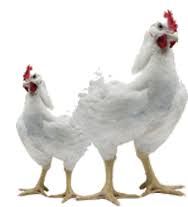
|
Original Research, B86
Portugaliza H.P. and T.J. Fernandez, Jr.
Online J. Anim. Feed Res., 2(6): 465-469, 2012.
ABSTRACT: A study was conducted to determine the growth performance of Cobb broilers supplemented with varying concentrations of Moringa oleifera Aqueous Leaf Extract (MoALE) via the drinking water. A total of four hundred day-old chicks were randomly distributed into four treatment groups, replicated four (4) times with twenty-five broilers per replicate. The growth performance of broilers was evaluated based on their feed consumption, live weight, feed conversion ratio (FCR) and return of investment (ROI). Results of the study showed that at 90 mL MoALE (T3), the feed consumption of broilers was consistently lower than the control group (T0) and this was statistically significant (P<0.01). The live weight of broilers given 30 mL (T1), 60 mL (T2) and 90 mL (T3) MoALEs were significantly higher than the control group (T0) and this was also statistically significant (P<0.01). In terms of feed conversion ratio (FCR), the MoALE treated broilers (T1-T3) were more efficient converter of feeds into meat than the control group (T0) and this was statistically significant (P<0.01). Furthermore, the return of investment (ROI) of MoALE treated broilers (T1-T3) was significantly higher (P<0.01) than the control group (T0) with a revenue per peso invested of Php 0.62 in T1 and T2, and Php 0.63 in T3 compared to Php 0.50 in T0.
Key words: Moringa oleifera, Broiler, Feed consumption, Live weight, Feed conversion ratio
|

.
.

|
|
The evaluation of dry season nutritive value of dominant and improved grasses in fallows in Chivi district, Zimbabwe

|
Original Research, B87
Tavirimirwa B., Manzungu E. and Ncube S.
Online J. Anim. Feed Res., 2(6): 470-474, 2012.
ABSTRACT: Five dominant (Cynodon dactylon, Perotis patens, Digitaria eriantha, Brachiaria brizantha, Hypethelia dissoluta) and two improved grasses (Pennisetum purpureum and Cynodon nlemfluensis) were compared for their nutritive value in Chivi district in terms of crude protein (CP), ash, dry matter(DM), neutral detergent fibre (NDF) and acid detergent fibre (ADF). The proximate analysis procedure was used to assess CP, ash and DM while NDF and ADF were estimated using the Van Soest et al. procedure. Significant differences were observed in the nutritive value of improved and dominant grasses. Cynodon nlemfluensis (5.54% CP, 39.04% ADF and 59.11% NDF) and P. Purpureum (5.35% CP, 39.17% ADF and 56.80% NDF) had significantly higher CP values and lower ADF values in comparison with dominant grasses, C. dactylon (3.75% CP, 44.13%ADF and 66.00% NDF), D. eriantha (2.21% CP, 48.78% ADF and 69.04 % NDF), P patens (3.51% CP, 47.51% ADF and 70.31% NDF), B. brizantha (2.37% CP, 50.95% ADF and 67.00% NDF) and H. dissoluta (2.10% CP, 44.49% ADF and 67.24% NDF). In terms of CP content comparisons, improved grasses have the potential to increase the carrying capacity of the fallows. It was concluded that the improved species have high nutritive value compared to the dominant grasses therefore have the potential to improve forage quality in terms nutritive value in fallow fields in Chivi.
Key words: Dominant grasses; Improved grasses; Nutritive value
|
 . .
.
 |
|
Occurrence of salmonella spp from fresh fish (tilapia nilotica linn) using improved isolation methods 
|
Original Research, B88
Nwiyi p. and Onyeabor A.
Online J. Anim. Feed Res., 2(6): 475-478, 2012.
ABSTRACT: Fresh fish (Tilapia Nilotica Linn) is a very important source of protein to the population in our country; this is of importance when other sources of animal protein are in short-supply. This freshwater fish may harbor salmonella spp. Which may be a source of pathogen to human hence, this study is important due to the public health implications. A total of 90 samples (30 whole freshwater fish, 30 intestines and 30 gills) were collected from different open market in Aba, South, Aba North and Osisioma Local Government Area all in Abia State, and examined. The objective of this study was to compare between non-pellet method and pellet method of isolation of salmonella spp. from different parts of freshwater fish. In this study, the pellet method was evaluated and compared with the non-pellet. Three selective agars used for the purpose of this study namely: Salmonella-shigella Agar (SSA) xylose Lysine Deoxycholate Agar (XLD) and Bismuth sulfite Agar (BSA). There was significance difference (P<0.05) with the pellet method on the 30 Tilapia sample. The frequency of occurrence in pellet method was 66.66%, 50.00% and 26.66% growth on SSA, XLD and BSA while non-pellet method presented occurrence of 33.33%, 23.33% and 13.30% for SSA, XLD and BSA respectively. It was observed that salmonella sp was found more on the whole body of Tilapia nilotica than the gill and intestine presenting 66.66%, 50.00% and 20.00% respectively. The result confirms that pellet method isolated higher number of salmonella sp than non – pellet method.
Key words: Tilapia nilotica, salmonella sp., Isolation, “pellet and non-pellet method”
|
 . .
.

|
|
Nutritive evaluation of two flood grasses in White Nile – Sudan
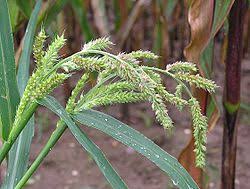 
|
Original Research, B89
Mahala A.G., Elnadeef Y.M.A., Amasaib E.O. and Atta Elmnan B.A.
Online J. Anim. Feed Res., 2(6): 479-482, 2012.
ABSTRACT: Flood grasses (Echinochloa stagnina and Echinochloa pyramidalis) were evaluated as animal feed in term of chemical composition and in vitro digestibility. Crude protein (CP) content was significantly (P < 0.05) higher in Echinochloa stagnina (9.7%) than in Echinochloa pyramidalis (6.5%). Acid-detergent fibre (ADF) (51.6%), Nitrogen-free extractive (NFE) (31.4), Neutral-detergent fibre (NDF) (69.8) and Ether extract (EE) (0.69) in Echinochloa stagnina were lower than in Echinochloa pyramidalis (55.7%, 35%, 73%, 0.95%) for ADF, NFE, NDF and EE respectively. Sodium (Na) content (0.7%) was significantly (P > 0.05) higher in Echinochloa pyramidalis than in Echinochloa stagnina (0.3%) and Calcium (Ca), Phosphorus (P), Potassium (K) and Magnesium (Mg) were (0.30% and 0.40), (0.60% and 0.60%), (1.60% and 1.70%) and (0.20% and 0.40%) in Echinochloa stagnina and Echinochloa pyramidalis respectively. In vitro dry matter digestibility (IVDMD) of Echinochloa stagnina (63%) was significantly (P > 0.05) higher than in Echinochloa pyramidalis (56%) as well as the values of Digestible acid-detergent fibre (DADF) (69.8%: 54%), Digestible neutral-detergent fibre (DNDF) (71%: 58.5%), and Digestible crude fibre (DCF) (38.3%: 33%). From obtained results it can be concluded that the two species of Echinochloa contribute most of livestock nutrients requirement. Further research required to improve their nutritional value, digestibility and feed intake.
Key words: Flood grass, Echinochloa stagnina, Echinochloa pyramidalis, Animal nutrition
|
.

.

|
|
Seroprevalence and isolation of chicken infected with salmonella haematological and pathogical evaluation
 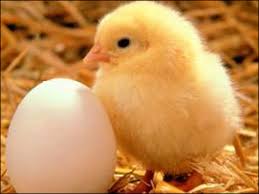
|
Original Research, B90
Nwiyi P. and Omodamiro O
Online J. Anim. Feed Res., 2(6): 483-487, 2012.
ABSTRACT: The research was conducted to study seroprevalence of bird infected with salmonella and to evaluate the pathology of the affected cockerel chicken in Abia and Umudike both in Aba north and Ikwuano local government area of Abia State, as well as isolate salmonella. This study was carried out from February to June, 2010. Samples used were blood cloaca and liver swabs. Other organs like intestine, ovary, spleen and lungs were also used. The serum plate agglutination method was used. Others are gross, histopathology, morphological, cultural and biochemical tests. The total percentage of seroprevalence was 45.0%. Gross lesion showed congestion, enlargement of the liver and petechial hemorrhages in the intestine. Hematological features showed that there were decreased red blood cells on hemoglobin while the white blood cells increased. And there was no significance difference. (P<0.05) At history, congestion, massive lymphocytes infiltrates in the liver paranchyma. The sum of 54 seropositive salmonella sampls from birds were isolated. Further study would also be carried out to investigate the pathogenesis, serotyping and sensitivity test.
Key words: Isolation and Seroprevalence, chicken, salmonella, heamatology, histology
|
 . .
.

|
|
Nutritive value of maize (zea mays) and dolecous (lablab purpureus) as affected by phosphorous fertilization and intercropping
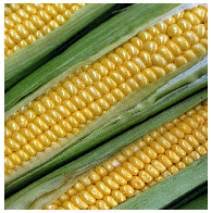

|
Original Research, B91
Amasaib E.O., Balgees A Atta Elmnan, Mahala A.G. and Fadel Elseed A.M.A.
Online J. Anim. Feed Res., 2(6): 488-492, 2012.
ABSTRACT: A field experiment was conducted at the Demonstration Farm of University of Khartoum to determine the effect of phosphorous fertilization and intercropping on the nutritive value of Zea mays and Lablab purpureus. The field experiment was arranged as Split Plot Design with four replications. The main plots were (Lablab purpureus as sole crop, Zea mays as sole crop, Lablab purpureus and Zea mays in the mixture). The sub plot treatments were phosphorous fertilization at the rate of (0, 50 and 75 kg P2O5 / ha) which were then referred to as P0, P1 and P2 respectively. The plants measured were Lablab purepureus as pure stand, Lablab purepureus in the mixture, Zea mays as the pure stand and the Zea mays in the mixture. Samples of 45 days cut from sowing were used to assess the ash, crude protein (CP), ether extracts (EE), crude fiber (CF), neutral detergent fibre (NDF) and dry matter digestibility. The data were statistically analyzed using complete randomized design. The results revealed that intercropping and phosphorous fertilization caused a significant (P<0.05) increased on the CP content and dry matter digestibility of all forages under estimation. Intercropping and phosphorous fertilization caused slight increase on the Ash content for all crops in this study. Moreover, Intercropping and phosphorous fertilization caused a decrease on the CF and NDF content of all forages under estimation but with no significant difference. However, Intercropping caused non–significant effect (P<0.05) on the EE content of Zea mays while, intercropping had a positive influence (P<0.05) on the EE content of Lablab purpureus. The data obtained indicated that phosphorous fertilization caused non–significant effect on the EE content of all crops in this study (P<0.05) except Lablab purpureus in the mixture with Zea mays which increased significantly (P<0.05) by increasing phosphorous level. It can be concluded that intercropping and phosphorous fertilization improved the nutritive value of both maize and lablab bean.
Key words: Nutritive Value, Digestibility, Forage Corn, Dolecous, Intercropping, Phosphorous Fertilization
|
 . .
.

|
|
Immune Responses of Broiler Chicks Supplemented with High Levels of Zinc  
|
Original Research, B92
Sajadifar S., Miranzadeh H. and Moazeni M.
Online J. Anim. Feed Res., 2(6): 493-496, 2012.
ABSTRACT: The objective of this study was to evaluate if the high levels of zinc can improve different aspects of broilers' immune system. One hundred and forty-four 1-d old broiler chicks were used in the current study with three dietary zinc (40, 120 and 200 mg/kg). At 2, 22, 32, 42 days of age, the blood serums were tested for antibody titer against Newcastle disease vaccination, using the standard Haemagglutination Inhibition test. On day 42 the sum of nitrite and nitrate (based on the reduction of nitrate to nitrite by cadmium) were measured and the weights of spleen and bursa of fabricius were recorded on a relative live weight basis. At 42 d, antibody response of level 200 mg/kg diet was significantly higher than control. Adding levels of 120 and 200 mg Zn/kg diet significantly increased the weight of bursa and spleen respectively (P< 0.05) compared with the control. Also level of 200 mg Zn/kg diet showed the highest amount of nitrite and nitrate in compare with other levels. The use of 200 mg Zn/kg diet in broilers diet could be considered as a natural promoter of cell-mediated immunity.
Key words: Antibody titer, Broiler, Immune organs, Newcastle disease, Nitrite and nitrate, Zinc
|
 . .
.

|
|
|
|
|
|
|
|
|
|
|
|
|
|
Original Research, B
------
Online J. Anim. Feed Res., 2(5): 000-000, 2012.
ABSTRACT:
Key words: |
|
|
|
|
|
|
|
|
|
|
|
|
|
|
|
|
|
|
|
